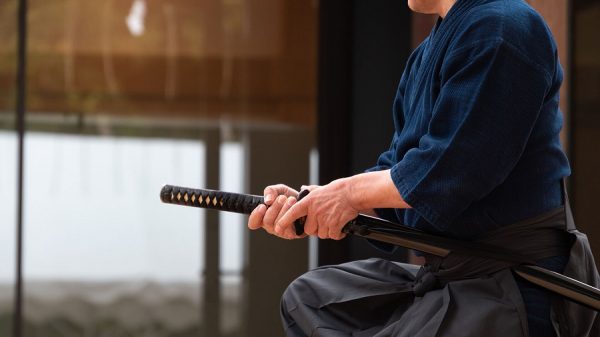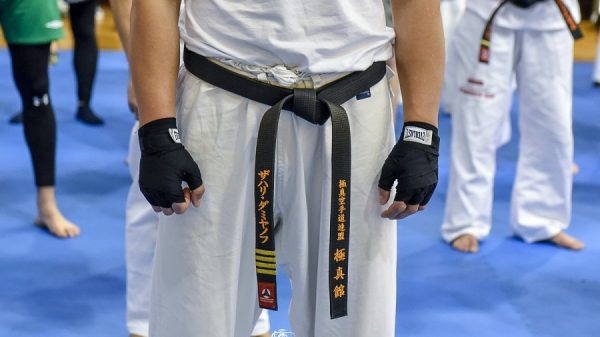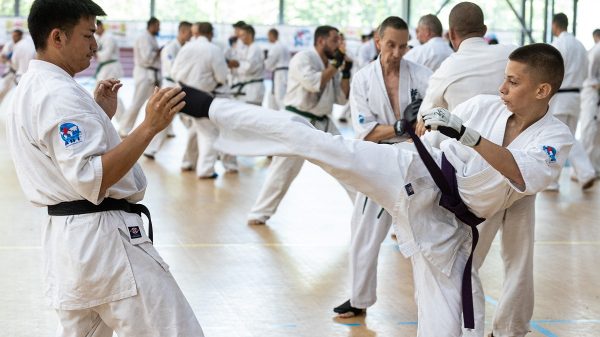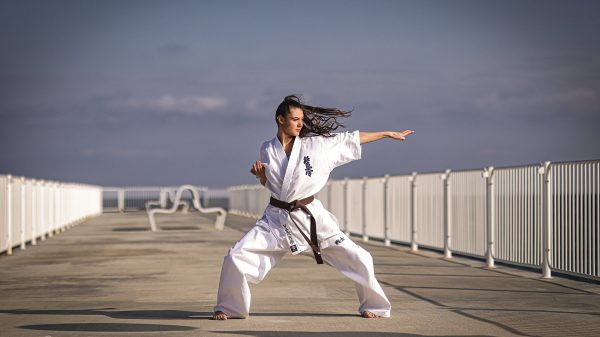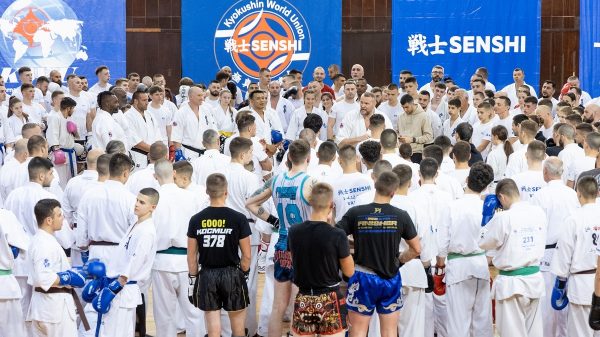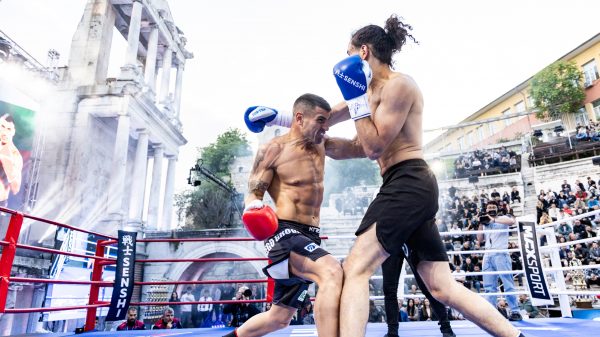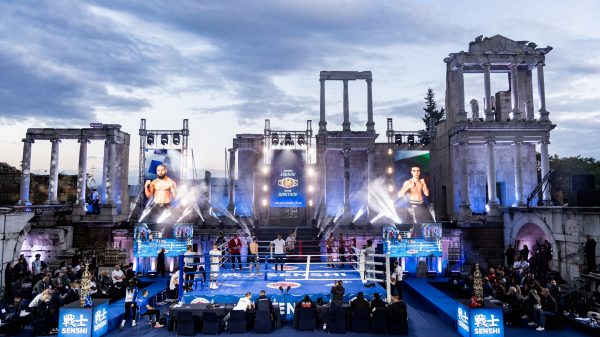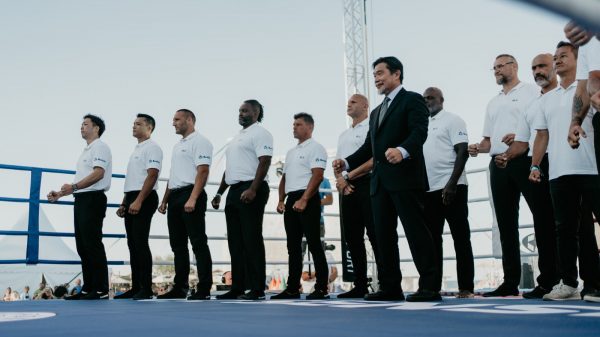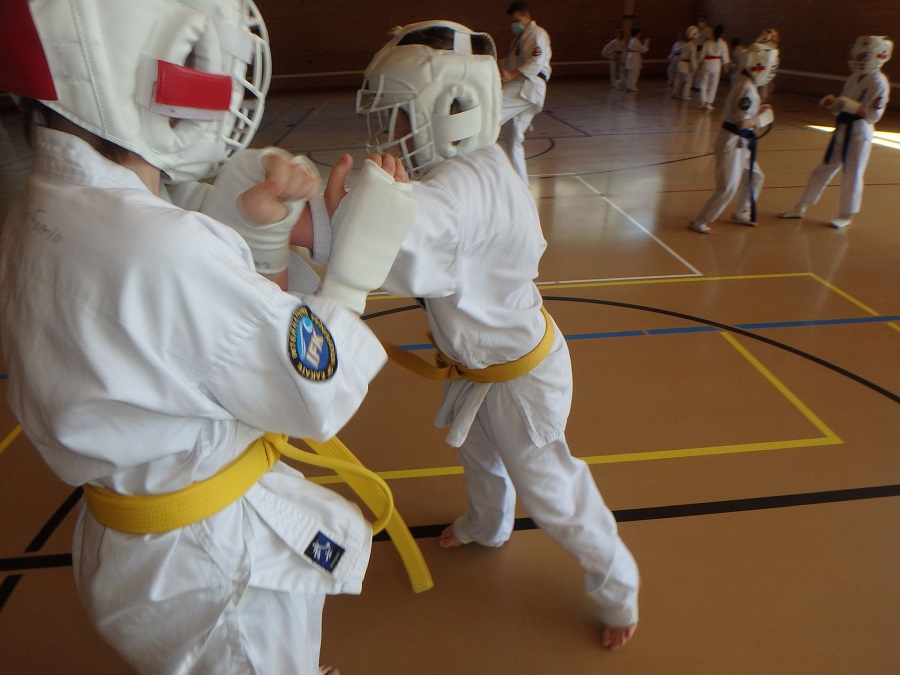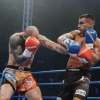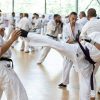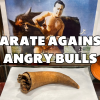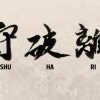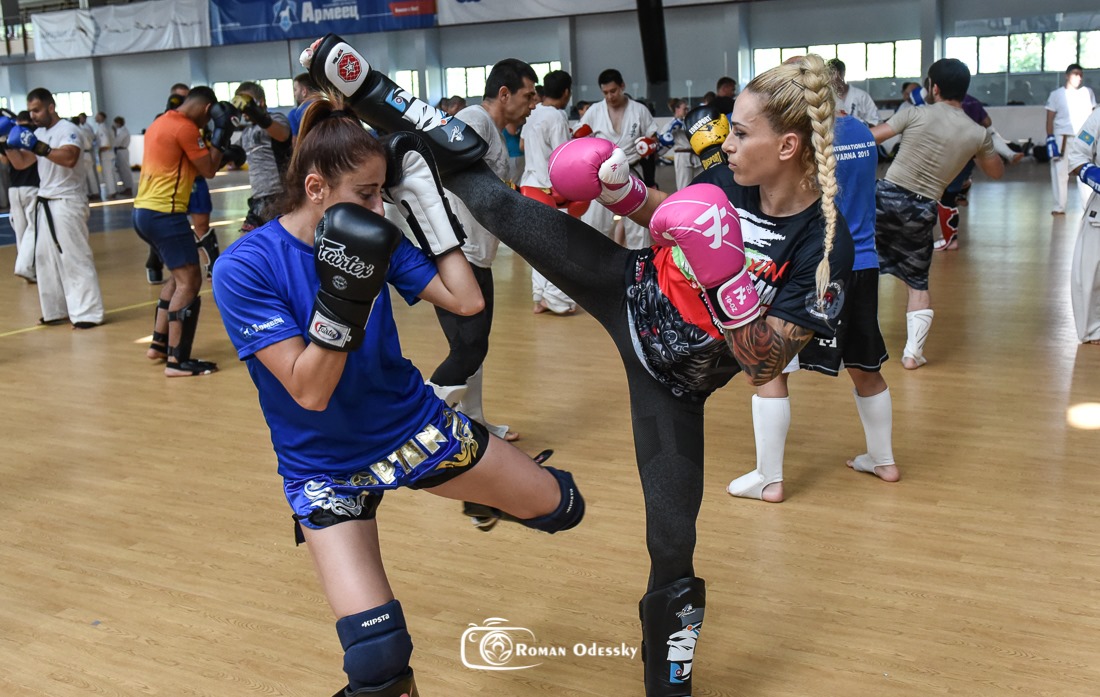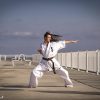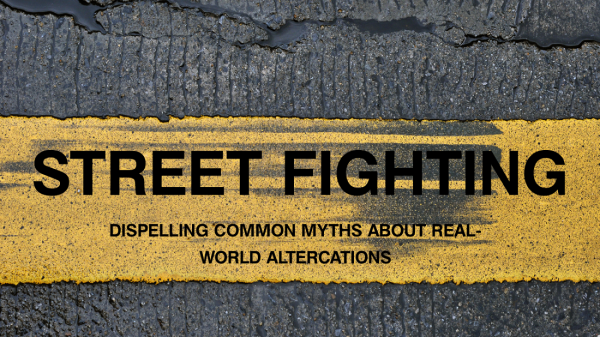But isn’t it all three, you might ask? Theoretically, one could answer yes. It depends on the style you practice and your teacher. There are forms of karate that focus quickly on the sports aspect, others are oriented towards self-defense (like the original Okinawan styles) and some are more oriented towards character perfection as well as a way to give meaning to one’s life.
Some teachers (including the author) will include self-defense techniques in all courses and others will teach them in special courses. We will come back to this last subject in another blog. In this article, we will discuss the first two aspects: combat sports or martial way (budo). We will also make a distinction between classical martial art and martial way (do).
Why was the father of karate against the competition?
It seems that Gichin Funakoshi, the father of Shotokan which gave the name to Karate, disagreed with his son Gigo who wanted to give a sporty aspect to Karate, like Judo and Kendo. For Funakoshi-father, karate was a martial way to develop all aspects of the warrior and to practice self-defense, which for him had nothing to do with sport. His practice consisted only of kata and bunkai (application of kata techniques with a partner). For his son, karate was a fighting art that could be transformed into a sport discipline like judo and kendo, which he had practiced extensively at university. Until Gigo’s death, the two continually disagreed about the direction of Karate.
For sportsmen, karate is a wonderful discipline that allows them to be physically fit. For purists, Karate-do is a budo, a martial way which implies that the one who practices it develops qualities and values related to the warrior which differ from the qualities of a sportsman.
People who practice a sport style of karate would be sincerely surprised if I told them that what they are doing is not a martial art, from the point of view of the warrior way.
What is the difference between sports karate and budo karate?
Let me explain my point of view. Sports applications of a fighting system, such as judo, karate-do, and taekwondo, are not a part of a true martial way. Placing a martial art in a sports arena limits its actual techniques and applications.
Modern athletes are trained to maneuver within a set of rules to give them every chance to win. Gradually, these athletes are neurologically programmed to react in very specific ways within a contextualized set of strict rules.
Often, certain techniques that are effective in this competitive context are totally inoperative in real combat where there are no rules.
What is lethal in real combat and becomes less and less practiced in a sport karate style will gradually disappear from training. This is when the notion of budo moves further and further away from this sports aspect. This is what happened, for example, with judo. Judo has its origin in a martial art which was jiu-jitsu. Jigoro Kano, the creator of Judo, simply removed the most dangerous part of Jiu-Jitsu and made it a sport that is taught in schools and universities. Judo thus moved away from the martial art of the warrior.
Some Taekwondo purists say the same thing about this discipline since it became Olympic, and this is what many Karate traditionalists fear with the possibility that Karate will eventually be accepted into the Olympics (it was only part of a demonstration sport at the last Olympics).
Yes, combat sports can be effective and establish beautiful values
Please note that I am not saying that combat sports are inefficient or bad. Far from it. They can promote beautiful qualities to their practitioners like all other forms of sports. Fitness, discipline, respect for others, resilience, and courage are values that these practitioners can develop and support in their daily lives.
These values are also useful to those who wish to follow the martial path. But those who practice sport karate purely and only for the purpose of applying it on the competition mat are deluding themselves into thinking that they are practicing a martial way.
On the other hand, it is possible that after having tasted the competition, the practitioner turns to the martial way. Especially if they are too old to pursue competition.
Some of you may wonder what the difference is between a “martial art” and a “martial way.
The difference between a martial “art” and a martial “way”
Let’s take the example of Japanese fighting arts. A fighting art can be classified into two autonomous systems. The system that has been developed by the warrior class is called bugei or bujutsu which means “martial art”. For example, jiu-jitsu and aiki-jutsu which were developed by the samurai to defend themselves with their bare hands in case they did not have access to their weapons.
The second fighting system is called budo. These forms of fighting were developed from the first system, like judo from jiu-jitsu, aikido from aiki-jutsu and kendo from ken-jitsu.
The practitioner of the first system develops his faculties with the only concern of surviving in real combat situations. The practitioner of the second system seeks to develop his physical, emotional, mental, and spiritual abilities in order to rise and transform his heart from lead to gold, like an alchemist. Although this system was developed by the first group, their ambitions go beyond the notion of combat efficiency. One could simplify this by saying that jujutsu practitioners seek to survive, while budoka pursue a quest.
To put it in a more accurate context, one could say that the founders who transformed the first system into the second were warriors themselves. They wanted to introduce an approach (do) to transform themselves from the inside out and create a stronger society. They transformed their art to make it more accessible and less dangerous for the masses. They intentionally diluted it for beginners and avoided many accidents.
These founders taught true lethal techniques to their advanced students. While these early practitioners were aware of the difference between the first and second systems, later generations gradually forgot some of their inner aspects and practiced only the outer shell. Little by little, what was a warrior art was substituted by mechanical rituals and superficial sports practices.
I would like to digress for a moment. Did you know that Karate is not a martial art? In the traditional sense, martial art is a system that has been developed for use in warfare. Like jiu-jitsu and aiki-jitsu which were used on the battlefield or when the samurai could not use his sword. Karate was invented by civilians (in Okinawa) who used it to defend themselves against samurais. Because any weapon was forbidden to them by the latter. When karate was imported to Japan, the suffix “do” was added to make it a martial art. Closing the parenthesis.
Can you follow the way of the warrior even if you do a combat sport?
Personally, I believe it is possible to combine all three. I approached Karate from the beginning as a budo. I practiced Kyokushin Knockdown Karate competition (full contact without protection) for 8 years. I considered the competition tatami as a battlefield that allowed me to practice my knowledge to constantly improve myself, both physically and mentally. The tatami was my laboratory. I was also a doorman in a nightclub for 5 years, which also allowed me to use several self-defense techniques to control one or several individuals without hurting them.
Competition is important, but it should not be the ultimate goal; it is only an accessory that allows you to forge and purify your being. Then, your sports practice should not be used to differentiate you from the others, to show that you are better than everyone else and that you have 62 trophies and 26 world championship titles. You must remain humble, as any true master or practitioner who follows the martial way will demonstrate daily. Finally, your practice must be oriented towards self-control, humility, compassion, and character improvement.
Gaetan Sauve


